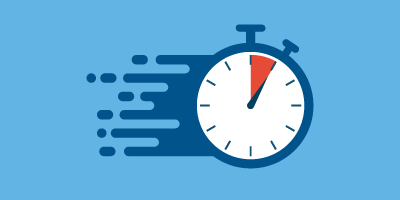For many households, working from home combined with homeschool and increased time spent indoors during quarantine has resulted in a house in complete disarray. Furniture worn out or broken from overuse. Clutter overtaking every room in the house. Heavily trafficked spaces becoming dirty and showing wear and tear. The house is disorganized. You are overwhelmed with clutter. You cannot locate necessary items. Once-functional items have broken. You cannot be efficient. You cannot effectively run a household.
Our businesses can all suffer from the same disorganization and dysfunction.
Our workspaces become cluttered and our processes become slow when they are overwhelmed with paperwork. Once-functional processes become outdated under the stress of altered workflow. Key financial documents like invoices can be lost, late, or mishandled when your staff is overwhelmed with manual processing. With so many areas in which our organizations can break down, where do we start the clean-up process? How can we best optimize our processes and what’s the first step? These questions are asked by smart businesses every day, and process optimization is fast becoming a catch-all for making the entire business more productive and profitable. Since it’s not realistic to do a complete overhaul of the business all at once, the process optimization specialist must decide what project should come first. Great news though…there is a tool that can be used to support and guide the optimization process from the outset: AP Analytics.
Let’s look at an example of a company that used AP analytics to successfully update and automate their financial processes, and thereby making themselves more efficient, effective, and profitable. Headquartered in Tokyo, Nidec Motor Corporation is a manufacturer of electric motors. Their products are found in hard-disk drives, electric appliances, automobiles and commercial and manufacturing equipment.
The majority of Nidec’s accounts payable processes were manual, and they worked very well for a long time. Invoice backlogs were always low, the finance team had no turnover, some automation had been introduced, and the perception was that everything was moving in the right direction. After a major acquisition, the shared services team’s responsibilities expanded, and the rate of organizational change exceeded the rate of the department’s change. The invoice backlog grew because the invoice volume grew, and on-time payment suffered. The team scrambled to keep up, errors accumulated, and employee morale fell. That’s when employee turnover started to increase. With Nidec’s additional mergers and acquisitions over the years, the shared services team became more overwhelmed. As the shared services team’s responsibilities grew, they knew it wasn’t process change they needed—they needed a total process transformation.
First, they defined improvement priorities. The key question asked when defining improvement priorities is: what business outcomes are you seeking to achieve as a result of the process optimization effort? The Nidec AP team decided their priorities were to create an AP process supporting strong supplier relationships to facilitate the on-time flow of goods and services.
Then, the Nidec AP team did a root cause analysis by asking “what is it about accounts payable that most directly impacts the health of our supplier relationships and the flow of business services?” By reviewing their AP analytics, they decided that accurate and on time payment as a function of low invoice process time was the fundamental area they needed to focus on.
Their AP analytics, improvement priorities, and root cause analysis were helpful tools as Nidec went out into the market to find an AP automation service provider willing and able to create a plan to optimize their processes. They selected a service provider (DataServ!), established a budget, and worked together on a tailored solution to automate their APA services, which included using our Invoice Processing Machine (formerly Digital Mailroom) and touchless processing of invoices with 2 and 3-way matching capabilities. As a result, Nidec lowered invoice processing time and gained back 5 FTE’s in capacity without adding a single headcount. This allowed them to take on more volume and absorb the workflow from additional mergers and acquisitions.
After completing a process optimization project, don’t forget to evaluate your AP analytics regularly to determine where challenges remain. Where can you find additional updates that will solve both internal and external challenges? According to Ryan Stewart, Senior Manager of Process Optimization at Nidec, your team needs to adopt a continuous improvement mindset and understand that one process improvement project does not take you across the finish line. These projects are not short (you cannot optimize your processes in a day or two) but they can keep you moving forward. And with the continuous improvement mindset, when one project finishes, you will have already used you’re AP analytics to determine which process optimization project should be next.







